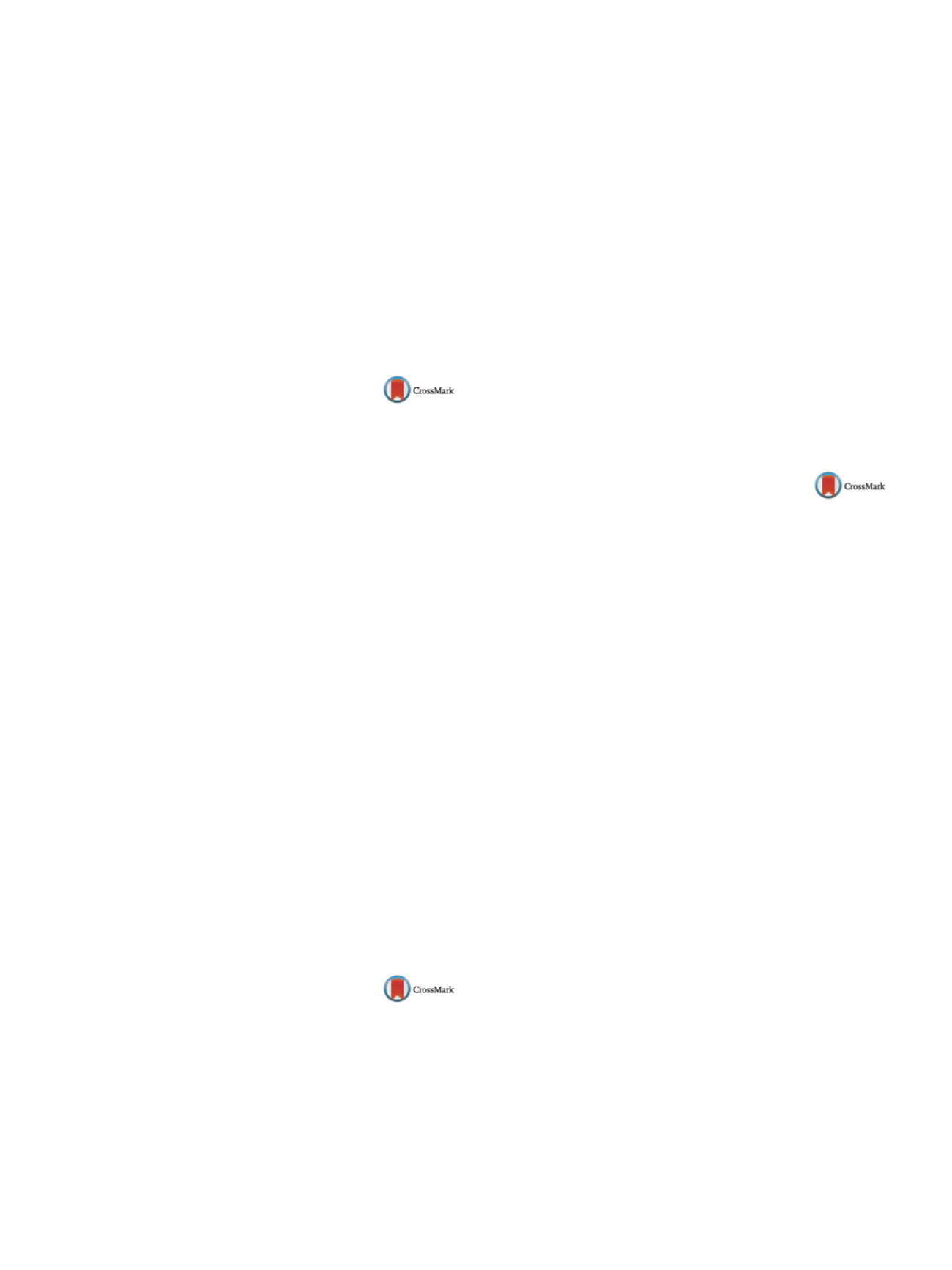

S468
25th European Congress of Psychiatry / European Psychiatry 41S (2017) S465–S520
conducted to discuss content. An 8 hour educational session was
then developed and piloted using the content that was reviewed
and validated.
Results
Thirteen content areas were identified and validated by
experts. Evaluations from participants of the educational session
suggest improved knowledge, skills and competencies in dual diag-
nosis care.
Conclusions
This project translates evidence into practice, con-
tributes to the body of knowledge on dual diagnosis care and
improves practitioners’ confidence and competency in delivering
evidence-based carewhich alsowill improve patient care outcomes
and experiences.
Disclosure of interest
The author has not supplied his declaration
of competing interest.
http://dx.doi.org/10.1016/j.eurpsy.2017.01.527EV0198
QTc Interval in psychiatric inpatients:
A retrospective study
N. Brondino
∗
, L. Fusar-Poli , M. Rocchetti , M. Besozzi , A. Mori ,
F. Fasoli , P. Politi
University of Pavia, Department of Brain and Behavioral Sciences,
Pavia, Italy
∗
Corresponding author.
Introduction
Several psychotropic medications (i.e. antipsy-
chotics, antidepressant) have been recently associated with QTc
prolongation. Despite literature data report only mild prolon-
gation of QTc following the use of antidepressants or typical
antipsychotics, post-marketing studies have clearly evidenced an
increased risk of QTc prolongation and potentially lethal arrhyth-
mias (i.e. torsade de pointes) in psychiatric patients.
Objectives
We aimed to evaluate the prevalence of prolongedQTc
and to identify potential predictors influencing QTc in a psychiatric
inpatient population.
Methods
Medical records of 200 patients admitted to our psychi-
atric ward between 2007 and 2012 were retrospectively reviewed.
Results
Prevalence of prolonged QTc at admission was very low
(0.1%). No significant differences in QTc interval were observed
between patients taking or not antipsychotics (
P
= 0.66), mood
stabilizers (
P
= 0.36), or antidepressants (
P
= 0.07). A statistically
significant difference was observed between patients on depot
formulation and patients who were taking oral antipsychotic
(
P
= 0.02). However, the pharmaceutical class of the medications
appeared not significant.
Conclusions
We observed a very low rate of QTc prolongation in
psychiatric inpatients at admission. Surprisingly we did not find a
significant effect of specific medications; however, in our sample
intramuscular formulation was associated with lower QTc interval.
Disclosure of interest
The authors have not supplied their decla-
ration of competing interest.
http://dx.doi.org/10.1016/j.eurpsy.2017.01.528EV0199
Attention deficiency hyperactivity
disorder and Internet addiction
comorbidity: A case report
Ö.C¸ . Cenker
1 ,∗
, A .C. Ercan
2 , D.Sarikaya Varlik
1 , T. Uyar
31
Kackar State Hospital, Psychiatry, Rize, Turkey
2
Recep Tayyip Erdogan, University Faculty of Medicine, Psychiatry,
Rize, Turkey
3
Kackar State Hospital, Neurology, Rize, Turkey
∗
Corresponding author.
Introduction
Internet addiction is a serious problemespecially for
children and adolescents. It is described by an individual’s inabil-
ity to control the Internet, which causes distress and functional
impairment. Internet addiction symptoms can be Internet surfing,
computer gaming, chatting and gambling by using Internet. Previ-
ous studies regarding Internet addiction can interfere with some
psychiatric disorders; such as bipolar disorder, depression, anxiety
or attention deficiency disorder (ADHD). Some researchers empha-
sized that psychiatric disorders and Internet addiction can be seen
together and excessive use of the Internet has been associated with
attention deficit hyperactivity disorder.
Case
19 years old male patient discussed in this paper who was
admitted to our psychiatric service for the first time in his life,
complaining about uncontrollable use of internet. He spent time
more than 10 hours/day. His family finally opposed and took his
computer from him, just before he got depressive symptoms. We
diagnosed him ADHD by using psychometric tests and psychi-
atric evaluations. After medical therapy and psychotherapy, we
discussed changes his psychiatric situations and symptoms.
Discussion
This case emphasized possible relationship between
Internet addiction and symptoms of ADHD.
Disclosure of interest
The authors have not supplied their decla-
ration of competing interest.
http://dx.doi.org/10.1016/j.eurpsy.2017.01.529EV0200
Cancer incidence in young and
middle-aged people with
schizophrenia: Nationwide cohort
study in Taiwan, 2000–2010
L.Y. Chen
Taipei City Psychiatric Center, Taipei City Hospital, Addiction
Department, Taipei, Taiwan, ROC
Aims
The relationship between cancer and schizophrenia
requires re-examination. We investigated the cancer risk among
young and middle-aged patients with schizophrenia.
Methods
Records of newly admitted patients with schizophre-
nia (
n
= 32.731) from January 2000 through December 2008 were
retrieved from the Psychiatric Inpatient Medical Claims database
in Taiwan, and the first psychiatric admission of each patient dur-
ing the same period was defined as the baseline. Five hundred and
fourteen incident cancer cases were identified and standardized
incidence ratios (SIRs) were calculated to compare the risk of can-
cer between those with schizophrenia and the general population.
Stratified analyses of cancer incidences were performed by gender,
site of cancers, and duration since baseline.
Results
The incidence of cancer for all sites was slightly higher
than that of the general population for the period (SIR = 1.15
[95% CI 1.06–1.26],
P
= 001). Men had a significantly higher inci-
dence of colorectal cancer (SIR = 1.48 [95% CI 1.06–2.06],
P
= 0.019).
Women had a higher incidence of breast cancer (SIR = 1.47 [95%
CI 1.22–1.78],
P
<
.
001). Intriguingly, the risk for colorectal cancer
was more pronounced 5 years after the first psychiatric admission
rather than earlier (SIR = 1.94 [1.36–2.75],
P
<
.
001), and so was the
risk for breast cancer (SIR = 1.85 [1.38–2.48],
P
<
.
001). The cancer
incidence was higher in schizophrenic patients contradicting the
belief that schizophrenia was protective of cancers.
Conclusions
Men andwomenwith schizophrenia weremore vul-
nerable to certain types of cancers, which indicate the need for
gender-specific cancer screening programs.
Disclosure of interest
The author has not supplied his declaration
of competing interest.
http://dx.doi.org/10.1016/j.eurpsy.2017.01.530

















